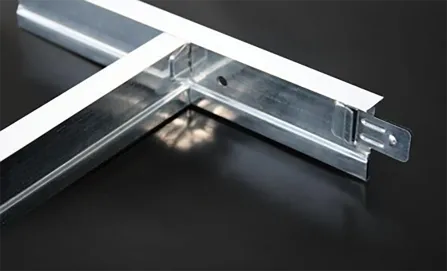- Afrikaans
- Albanian
- Amharic
- Arabic
- Armenian
- Azerbaijani
- Basque
- Belarusian
- Bengali
- Bosnian
- Bulgarian
- Catalan
- Cebuano
- Corsican
- Croatian
- Czech
- Danish
- Dutch
- English
- Esperanto
- Estonian
- French
- German
- Greek
- Hindi
- Indonesian
- irish
- Italian
- Japanese
- Korean
- Lao
- Malay
- Myanmar
- Norwegian
- Norwegian
- Polish
- Portuguese
- Romanian
- Russian
- Serbian
- Spanish
- Swedish
- Thai
- Turkish
- Ukrainian
- Uzbek
- Vietnamese
Abe . 05, 2024 08:57 Back to list
Exploring the Benefits and Uses of Ceiling Mineral Fiber Materials
The Versatility of Ceiling Mineral Fiber An Overview
In the realm of building materials, ceiling mineral fiber has emerged as a popular solution for both residential and commercial constructions. Known for its excellent acoustic properties and fire resistance, mineral fiber ceilings have become a go-to choice for architects, builders, and interior designers seeking functional yet aesthetically pleasing options. In this article, we will explore the benefits, applications, and considerations of using ceiling mineral fiber tiles in construction projects.
What is Ceiling Mineral Fiber?
Ceiling mineral fiber primarily consists of natural or synthetic fibers that are combined with binders to create lightweight, durable tiles or panels. These materials are processed to provide various textures and designs, suitable for a diverse range of architectural styles. Variants include glass fiber, stone wool, and other mineral-based materials, which contribute to their unique properties.
Key Benefits
1. Acoustic Performance One of the standout features of mineral fiber ceilings is their sound absorption capabilities. These tiles can significantly reduce noise levels in a space, making them ideal for environments such as offices, schools, and hospitals, where silence is essential for productivity and comfort.
2. Fire Resistance Safety is paramount in any construction project, and mineral fiber ceiling tiles are inherently fire-resistant. Many products are designed to meet stringent fire codes, providing an added layer of protection during unforeseen events. This characteristic makes them a preferred choice in commercial applications where occupant safety is a priority.
3. Energy Efficiency Ceiling mineral fiber can contribute to a building's energy efficiency. These tiles have insulating properties that help maintain temperature control, thus reducing the workload on heating and cooling systems. This can lead to significant energy savings over time.
4. Moisture Resistance Certain types of mineral fiber tiles come with moisture-resistant properties, making them suitable for high-humidity areas like bathrooms and kitchens. This feature helps to prevent mold and mildew growth, enhancing indoor air quality.
ceiling mineral fiber

Versatile Applications
Ceiling mineral fiber tiles can be used in a multitude of settings
- Commercial Spaces Offices, retail spaces, and hospitals often utilize mineral fiber ceilings due to their acoustic and aesthetic benefits. Customizable designs can enhance the overall atmosphere of the environment.
- Educational Institutions Schools and universities leverage the sound absorption qualities of these ceilings to create conducive learning environments. Additionally, their fire-resistant properties ensure the safety of students and faculty.
- Residential Homes Homeowners are increasingly turning to mineral fiber ceilings for finished basements, kitchens, and living areas. The variety of textures and finishes available allows for seamless integration with various interior designs.
Considerations
While ceiling mineral fiber offers numerous advantages, there are some considerations to keep in mind. Installation can be more complex than traditional ceiling options, and proper handling is essential to avoid damage to the tiles. Moreover, while many mineral fiber tiles are made to resist moisture, they are not completely waterproof, making careful placement crucial in areas prone to water exposure.
Conclusion
Ceiling mineral fiber is a versatile, functional, and aesthetically pleasing option for a wide range of applications. Its exceptional acoustic performance, fire resistance, energy efficiency, and moisture resistance make it a smart choice for builders and designers alike. As the demand for sustainable and safe building materials continues to rise, ceiling mineral fiber is poised to remain a leading choice in the construction industry. Whether for commercial use or residential projects, understanding the benefits and applications of this material can lead to better design choices and improved overall satisfaction with the built environment.
-
Transform Interiors with PVC Gypsum Ceiling: A Stylish, Durable, and Moisture-Resistant SolutionNewsMay.19,2025
-
The Smart Interior Upgrade: Discover the Durability and Versatility of Gypsum Ceiling Access Panel SolutionsNewsMay.19,2025
-
The Smart Choice for Interior Design: Discover the Value of PVC Gypsum Ceiling SolutionsNewsMay.19,2025
-
Mineral Fiber Ceiling Tiles: The Smart Blend of Performance and AestheticsNewsMay.19,2025
-
Mineral Fiber Ceiling Tiles: The Superior Choice Over Gypsum for Sound and Fire SafetyNewsMay.19,2025
-
Mineral Fiber Ceiling Tiles: Eco-Friendly Strength and Style for Every CeilingNewsMay.19,2025







